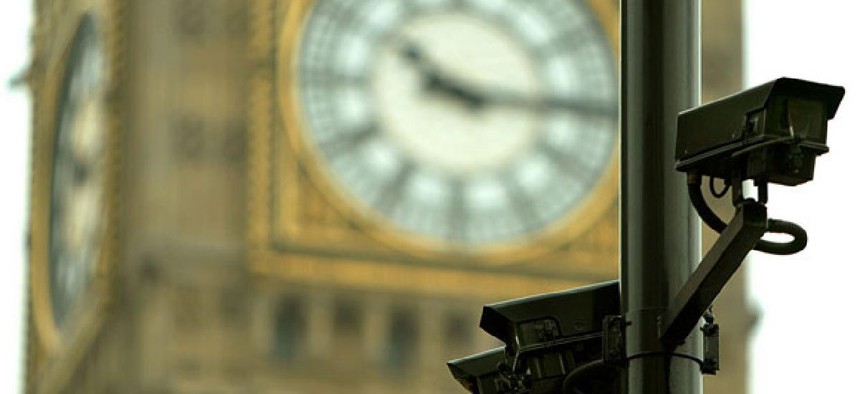The Boston Marathon Bombers Were Probably Caught on Camera

John D McHugh/AP file photo
And they can be found. But it will take no small effort.
The perpetrators of the Boston Marathon blast were caught on camera.
OK, we don’t know that for sure, yet. But in a world where cameras are found in everyone's pockets, it seems impossible for their movements and actions not to have been recorded.
For one, there were thousands of people outside in Boston on Monday afternoon taking video and pictures. The Boston Police Department has already asked citizens to send in their footage, and it will be included in the investigations. But even without the mobile phones, chances are the plotters were caught on camera. Like most modern cities, Boston has an extensive and sophisticated closed-circuit television (CCTV) system.
According to a 2007 report on infrastructure security, the city of Boston has at least 147 wireless cameras placed throughout the city and in surrounding areas monitoring critical infrastructure and feeding that information back to the police. “The secondary purpose of any and all cameras will be to assist local jurisdictions in providing for the public safety by monitoring critical infrastructure,” the report states.
If the person or persons used public transportation, there’s a near certainty they were recorded. As of 2007, the Massachusetts Bay Transportation Authority had 402 cameras throughout its system and was in the process of adding 186 more. Factor in the cameras mounted on private businesses, and there’s probably almost no inch of public space that isn’t monitored.
In all, this gives police thousands upon thousands of hours of footage to comb through. It won’t be easy, but it can be done.
How do we know? After the 2005 bombings in London, a city with one of the most extensive CCTV systems in the world , the city pieced together the proceeding of the terrorists as they made their way through the city to their target.
The city’s official narrative of the incident makes clear the painstaking work involved. Here what the cameras captured on July 7, the day of the bombing.
03:58 A light blue Nissan Micra is caught on CCTV in Hyde Park Road, Leeds, prior to joining the M1 outside Leeds.
04:54 The Micra stops at Woodall Services on the M1 to fill up with petrol… He [Tanweer, one of the co-conspirators] buys snacks, quibbles with the cashier over his change, looks directly at the CCTV camera and leaves.
6:49 The Micra arrives at Luton and parks next to the Brava. The 4 men get out of their respective cars, look in the boots of both, and appear to move items between them. They each put on rucksacks which CCTV shows are large and full.
7:15 Lindsay, Hussain, Tanweer and Khan [the plotters] enter Luton station and go through the ticket barriers together. It is not known where they bought their tickets or what sort of tickets they possessed, but they must have had some to get on to the platform.
7:21 The 4 are caught on CCTV together heading to the platform for the King’s Cross Thameslink train.
8:23 The train arrives at King’s Cross, slightly late due to a delay further up the line. The 4 are captured on CCTV at 08.26am on the concourse close to the Thameslink platform and heading in the direction of the London Underground system. At around 08.30am, 4 men fitting their descriptions are seen hugging. They appear happy, even euphoric.
08.50: CCTV images show the platform at Liverpool Street with the eastbound Circle Line train alongside seconds before it is blown up. Shehzad Tanweer is not visible, but he must have been in the second carriage from the front.
Six days after the attack, police start linking these events together. “By 13 July, the police had strong evidence that Khan, Tanweer, Hussain and Lindsay were the bombers and that they had died in the attacks.” But it was no small feat: Police collected 80,000 CCTV tapes , amounting to hundreds of thousands of hours of footage. The London police brought on some 400 extra officers to help with the grunt of it. "The scale is enormous," the narrative concluded.
As Alexis Madrigal writes at The Atlantic , although we have the technology to capture and record every inch of a city in real time, the process very much depends on a human eye to analyze. "Right now, there is no video software that can do this type of analysis," he writes, "not even in a first-pass way."
Even so, given the history here, it seems likely that given enough time, the perpetrators of the bombing will be found on camera. Whether the police can connect the thread among all the disparate sources of information is another matter.







